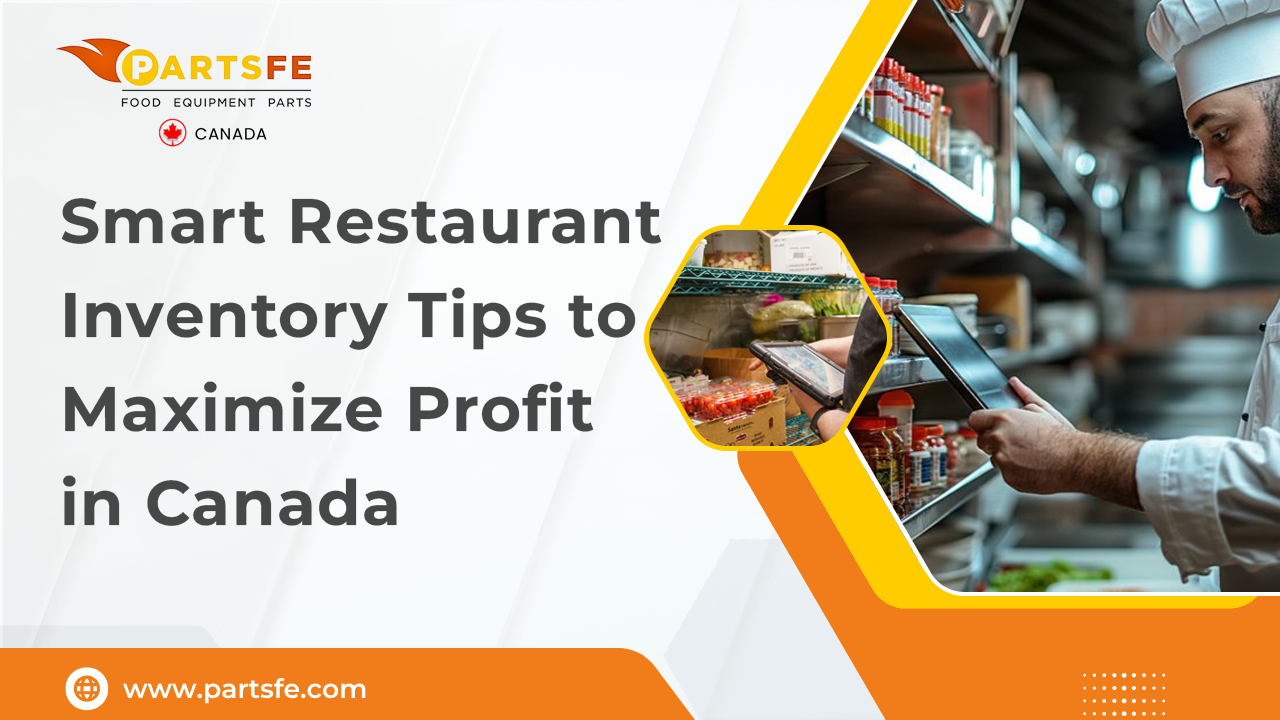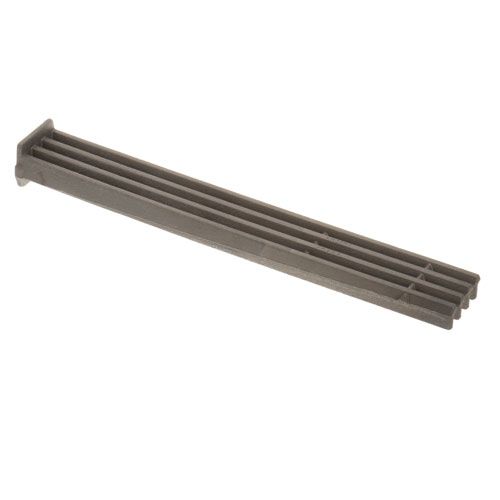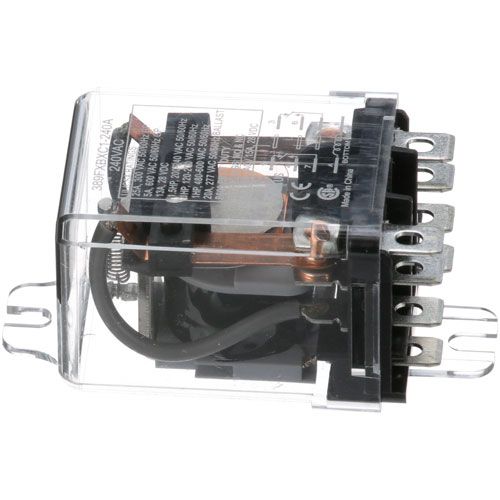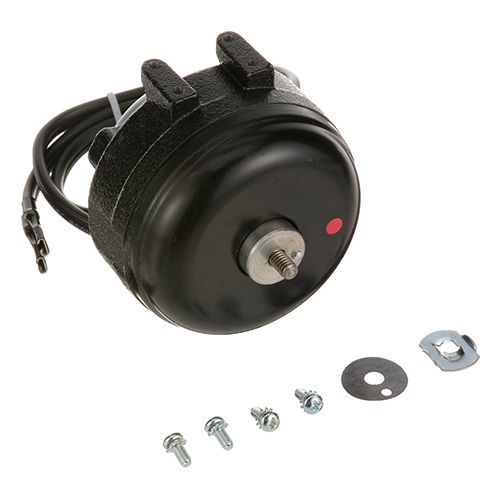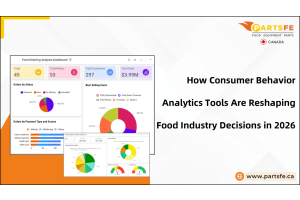Smart Restaurant Inventory Tips to Maximize Profit in Canada
In today’s competitive Canadian restaurant industry, efficient inventory management is essential for maximizing profits and minimizing waste. With rising food costs and the challenges of sourcing fresh, local ingredients across diverse regions, restaurants need smart strategies to keep operations lean and costs under control. Proper inventory management not only ensures you have the right ingredients on hand but also helps prevent spoilage, reduce over-ordering, and improve cash flow. This article dives into proven tips and best practices tailored specifically for Canadian restaurants, helping owners and managers optimize their inventory processes. Whether you operate a small café or a large dining establishment, mastering these inventory techniques can significantly enhance your profitability and keep your kitchen running smoothly.
| Table of Contents: Essential Restaurant Inventory Management Strategies to Maximize Profit What Makes a New Restaurant Stand Out to Canadian Consumers? Final Thoughts |
Essential Restaurant Inventory Management Strategies to Maximize Profit
Efficient inventory management plays a vital role in driving profitability for every restaurant. Implementing the right strategies helps reduce waste, control costs, and ensure smooth daily operations, key factors for success in Canada's competitive dining market.
Upgrade from Manual to Automated Inventory Management
Many restaurants still rely on spreadsheets or paper logs for inventory management. In addition to being time-consuming, this process is prone to human error. Switching to an automated inventory system can streamline the entire process.
Benefits of automation include:
-
Mobile-friendly counting via smartphones or tablets
-
Automatic invoice scanning and item tracking
-
Real-time stock updates and alerts
-
Integration with your POS and accounting software
By digitizing your inventory, you improve accuracy, reduce food waste, and free up staff time to focus on customer service and kitchen performance.
Use the First-In, First-Out (FIFO) Method
A waste-reducing inventory system is built on FIFO. By ensuring that the oldest inventory is used first, spoiling and excessive waste are avoided.
For FIFO to be implemented successfully:
-
Items should be marked with the date of receipt or expiration.
-
Store older items at the front and newer ones behind
-
Train staff to rotate stock during every restock or prep session
This simple yet powerful system ensures food stays fresh and minimizes unnecessary loss.
Set Par Levels and Emergency Stock Reserves
Par levels represent the minimum amount of each inventory item required to meet daily operational demands without excess stock. Establishing these levels for your ingredients helps streamline cash flow and maximize storage efficiency.
How to determine a par level:
-
Review historical sales data for a typical week
-
Factor in supplier delivery schedules and potential delays
-
Include a buffer or "safety stock" for high-demand days
Maintaining the right par level avoids the twin dangers of running out of key ingredients or letting stock expire unused.
Standardize Recipes and Portions
Standardizing recipes and serving sizes across your kitchen is one of the most effective ways to maintain accurate inventory tracking. When you know exactly how much of each ingredient goes into each dish, you can closely monitor and control food costs.
To put this into practice:
-
Create and document detailed recipe cards for every menu item
-
Use portion control tools like scales, scoops, and measuring cups
-
Train kitchen staff to follow recipes precisely
This approach ensures consistent customer experiences and reduces variance in ingredient usage.
Implement Real-Time Inventory Tracking
Rather than taking stock just once a week, more restaurants are adopting real-time tracking. This means your inventory is automatically updated whenever an ingredient is used, a sale is made, or a delivery arrives.
The advantages of real-time inventory tracking include:
-
Spotting low stock items before they become critical
-
Monitoring discrepancies in actual vs. expected usage
-
Reducing losses due to theft, spoilage, or over-portioning
What's on your shelves and what's in your books are guaranteed to match thanks to this system.
Generate and Analyze Inventory Reports Regularly
Inventory reports tell the story behind your numbers. With the appropriate reporting tools, you can monitor crucial information such as:
-
Cost of Goods Sold (COGS)
-
Inventory Variance
-
Waste Reports
-
Inventory Valuation
-
Comps and Voids
These insights help you identify problem areas and make data-informed decisions to improve efficiency.
Forecast Demand with Historical Data
Inventory forecasting is crucial, especially in canada, where seasonal trends, weather changes, and local holidays can significantly impact customer volume. Use past sales data to forecast how much of each ingredient you’ll need over specific periods.
Steps to forecast effectively:
-
Review sales from the same period in previous years
-
Factor in upcoming events, weather forecasts, and holiday seasons
-
Adjust your orders based on predicted customer flow
This reduces the risk of overstocking during slow periods or running out of food during busy ones.
Engineer Your Menu Based on Inventory Insights
Menu engineering involves analyzing your dishes to understand their profitability and popularity. When you connect this data with your inventory system, you can make strategic decisions about what to promote, rework, or remove.
Four menu item types to consider:
-
Stars
-
Plow Horses
-
Puzzles
-
Challenges
Knowing which items contribute most to your bottom line helps you align your menu with customer preferences and your inventory strategy.
Adopt Just-In-Time (JIT) Ordering
JIT ordering is a lean inventory method where stock is ordered and delivered exactly when it’s needed, minimizing storage costs and waste. This method requires reliable suppliers and a good understanding of your restaurant’s daily needs.
To make JIT work:
-
Build strong relationships with dependable vendors
-
Maintain consistent order schedules
-
Monitor delivery performance and address delays quickly
JIT ordering is especially helpful for small kitchens or restaurants using local and perishable ingredients.
Strengthen Supplier Relationships
Your vendors play a vital role in maintaining your inventory flow. Better price, more flexible terms, and priority access to in-demand commodities can result from cultivating positive connections with your suppliers.
Best practices for managing suppliers:
-
Consolidate purchases with fewer vendors when possible
-
Communicate openly about volume forecasts and special requests
-
Track supplier performance, such as on-time delivery, accuracy, and product quality
Negotiating better terms and developing loyalty with your vendors gives you more control over your food costs.
Reduce Waste and Prevent Theft
One of the easiest ways to boost profit is by reducing avoidable losses. Food waste and theft are two major contributors to inventory shrinkage, but both can be addressed with proper monitoring and culture building.
How to combat waste and theft:
-
Require detailed reason codes for voids and comps
-
Use portion control tools to reduce over-serving
-
Conduct random audits and cross-check with sales reports
-
Foster a transparent, positive kitchen culture
Your margins can be significantly impacted by even a small percentage point reduction in waste.
Train Staff and Assign Accountability
Managing inventory requires teamwork. Your staff need to understand why accurate counts and careful usage matter to the restaurant’s success and their job security.
To build accountability:
-
Assign inventory responsibilities to specific team members
-
Train all staff on FIFO, portioning, and waste logging
-
Review inventory performance in staff meetings
-
Reward attention to detail and efficiency
When employees feel invested in the outcome, they’re more likely to follow best practices.
Choose the Right Inventory Management System
With so many options for restaurant software, it's critical to select one that meets your requirements and works well with the tools you already have. Important characteristics to search for are:
-
Real-time inventory updates
-
Recipe and menu integration
-
Supplier management tools
-
Cloud access and mobile compatibility
-
Customizable reports and alerts
An all-in-one POS and inventory platform can centralize your operations and eliminate inefficiencies.
Monitor Key Inventory KPIs
Keep an eye on these important performance indicators to see how well your inventory plan is working:
-
Food cost percentage
-
Inventory turnover rate
-
Variance percentage
-
Waste cost per day or week
These numbers provide a roadmap to higher profits and smoother operations.
Check out this article on essential commercial kitchen supplies to make sure your inventory supports peak performance and profitability.
What Makes a New Restaurant Stand Out to Canadian Consumers?
In a competitive dining landscape, standing out is essential, especially for new establishments. Canadians today are discerning, socially connected, and value-driven when choosing where to dine.
These are the main elements that Canadian customers look for in a new restaurant:
Location and Accessibility
-
Easy to reach by foot, transit, or car
-
Clear signage and curb appeal
-
Parking availability in suburban areas
Unique Menu Offering
-
Creative or fusion dishes
-
Locally sourced or seasonal ingredients
-
Diverse dietary options such as vegan, halal, and gluten-free
Ambiance and Design
-
Aesthetic interiors that are social media-friendly
-
Comfortable atmosphere with consistent branding
-
Good lighting, clean layout, and mood-enhancing music
Service Quality
-
Warm, knowledgeable, and attentive staff
-
Efficient wait times
-
Memorable and personalized guest experiences
Online Reviews and Word-of-Mouth
-
Strong Google and Yelp ratings
-
Social media photos and customer-generated content
-
Local buzz, influencers, or food bloggers endorsements
Strong Digital Presence
-
Mobile-responsive website
-
Online reservations or ordering
-
Active and engaging social media presence
Sustainability Practices
-
Compostable or reusable packaging
-
Support for local farms and ethical sourcing
-
Low-waste kitchen operations
Grand Opening Promotions
-
Limited-time discounts or specials
-
Loyalty incentives for first-time diners
-
Collaborations with local creators or events
Check out this article on the solo dining surge in canada to learn how your restaurant can turn this trend into a competitive advantage.
Final Thoughts
Inventory isn’t just about counting cans and boxes; it’s about controlling costs, improving efficiency, and making strategic decisions that boost profitability. For Canadian restaurants, mastering smart inventory management and understanding what differentiates your business from the competition can be the key to long-term success rather than simply getting by. By implementing these strategies and gaining insight into what truly drives Canadian diners, you can position your restaurant for lasting growth and profitability. Your restaurant can reduce waste, increase margins, attract loyal customers, adapt to evolving trends, and ultimately boost profitability across the board.
Looking to optimize your restaurant inventory with quality parts? PartsFeCA offers essential parts like commercial ovens, refrigeration compressors, and commercial fryers from leading brands such as True, Manitowoc, and Turbo Air for excellent performance.
FAQs
What are the best practices for managing restaurant inventory?
Best practices include regular stocktaking, using inventory management software, tracking expiry dates, ordering based on usage trends, and training staff on proper handling.
How can inventory management maximize restaurant profit?
By minimizing food waste, optimizing order quantities, preventing theft, and improving operational efficiency, restaurants can significantly increase their profit margins.
How do you balance inventory levels to avoid shortages and excess stock?
Use sales data and historical trends to forecast demand accurately, and maintain safety stock levels without overstocking.
What tools are recommended for smart restaurant inventory management?
Popular tools include Upserve, MarketMan, Toast POS, and simple spreadsheets combined with barcode scanners for smaller operations.

